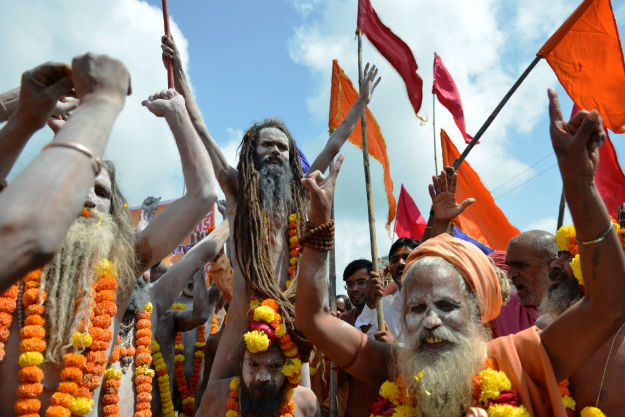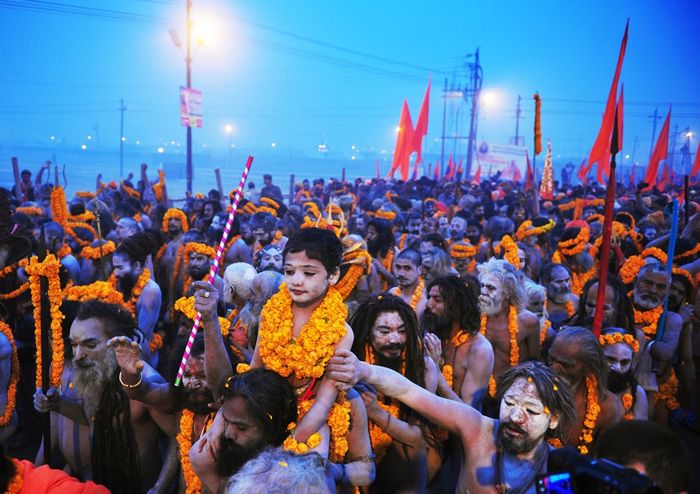Ujjain Simhastha

Simhastha kumbh Ujjain
Introduction- Juna Akhara
Ujjain Simhastha is a Hindu religious mela held every 12 years in the Ujjain city of Madhya Pradesh, India. The name is also transliterated as Sinhastha or Singhastha. In Hindi, the fair is also called Simhasth or Sinhasth (due to schwa deletion).
It is one of the four fairs traditionally recognized as Kumbha Melas, and is also known as Ujjain Kumbh Mela. According to Hindu mythology, Vishnu dropped drops of amrita (the drink of immortality) at four places, while transporting it in a kumbha (pot). These four places, including Ujjain, are identified as the present-day sites of the Kumbh Mela.”Kumbh” in its literal English translation means “Pot”, which emerged from “Samudra Manthan”(Churning of the Ocean) between Gods and Demons. The term ‘Mela‘ signifies’Fair‘.

The Simhastha at Ujjain is an adaptation of the Nashik-Trimbak Simhastha fair to a local festival of uncertain origin. In its current form, it began in the 18th century when the Maratha ruler Ranoji Shinde invited ascetics from Nashik to Ujjain’s local festival. Both Ujjain and Nashik fairs adopted the Kumbha myth from the Haridwar Kumbh Mela. The Simhastha at Ujjayini pays special reverence to the temple of Mahakaleshwar Jyotirlinga, which is the abode of Lord Shiva’s Swayambhu lingam. A river-side festival, it is celebrated on the banks of Shipra river. The fair attracts millions of pilgrims.
The Ujjain Simhastha is held once in 12 years, when the Jupiter is in Leo (Simha in Hindu astrology). The main snana (bathing ritual) happens on the full moon day in Vaisakha month of the Hindu calendar (April–May).
History
The Ujjain Simhastha started in the 18th century as an adaptation of the Nashik-Trimbakeshwar Simhastha. The Khulasat-ut-Tawarikh (1695 CE) is the earliest extant text that mentions the term “Kumbh Mela”. The book mentions Ujjain as a very sacred place in its description of the Malwa Subah. However, it does not mention any fair at Ujjain, although it mentions the melas at Haridwar (an annual mela and a Kumbh Mela every 12 years), Prayag (an annual mela in Magh) and Trimbak (a mela held every 12 years when Jupiter enters Leo).Like the fairs at Prayag (Allahabad) and Nashik, the Ujjain mela was not called a “Kumbh Mela” until the 19th century: that term was originally used only for the Haridwar fair.


